Rediscovering the Pilgrims' Path: New Insights into Ancient Jerusalem
The main street of Second Temple-era Jerusalem is unearthed in City of David. The celebration saw prominent attendees, including U.S. Ambassador David Friedman and special envoy Jason Greenblatt.
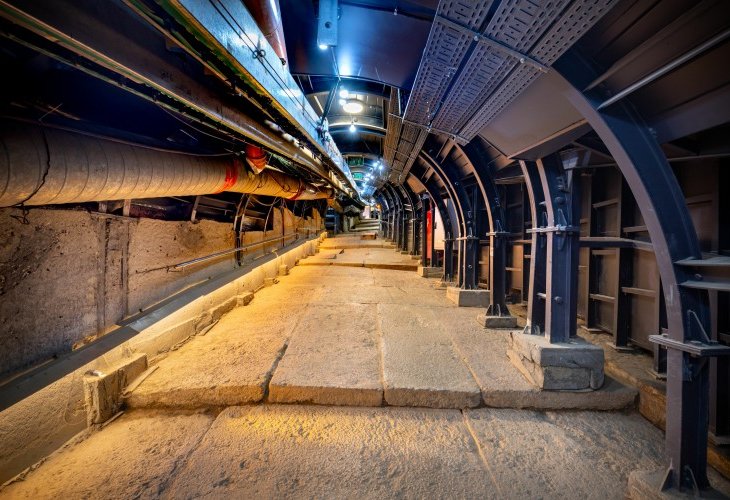 The stepped street, dating back to the Second Temple period (Photo: Kobi Harati, City of David)
The stepped street, dating back to the Second Temple period (Photo: Kobi Harati, City of David)In the City of David in Jerusalem, "Pilgrims' Path"—the city's main thoroughfare during the Second Temple period leading pilgrims to the Temple—was inaugurated yesterday (Sunday). Following six years of archaeological excavations conducted by the Israel Antiquities Authority with funding from the Elad Foundation, a 350-meter section has been unveiled for the first time. This excavation was managed by Dr. Joe Uziel, Ari Levy, Nahshon Zanton, and Moran Hajbi from the Israel Antiquities Authority.
The festive event was attended by the Prime Minister's wife, Sara Netanyahu, ministers and members of the Knesset, U.S. Ambassador to Israel David Friedman, and the White House's Special Envoy to the Middle East, Jason Greenblatt. The path is set to open to the public in the coming months.
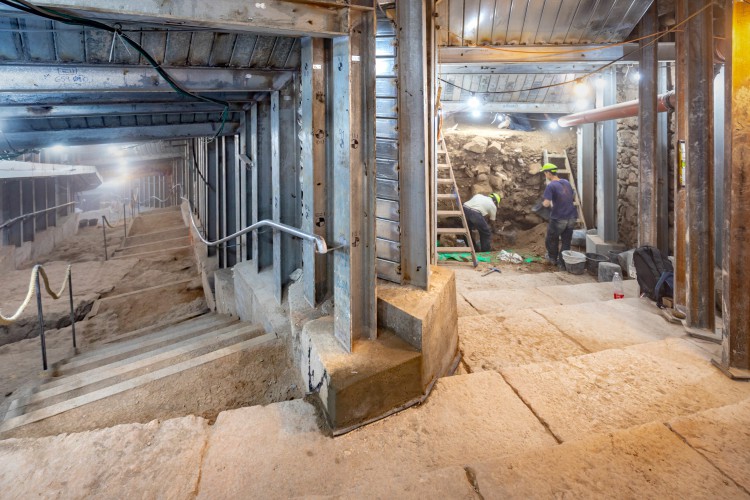 Work on the street (Photo: Kobi Harati, City of David)
Work on the street (Photo: Kobi Harati, City of David)Contrary to the prevailing research view that the residents of the City of David's hill—dubbed the "Lower City" by Josephus Flavius—were of modest means, findings from the excavations suggest that the population living there at the time was affluent. According to the excavation directors, "The impressive street and the structures exposed along it indicate the area housed people of means. Among the ruins, luxury items, notably fragments of ornately decorated stone tables, were discovered." Two tables from the wide range unearthed were displayed for the first time at the event.
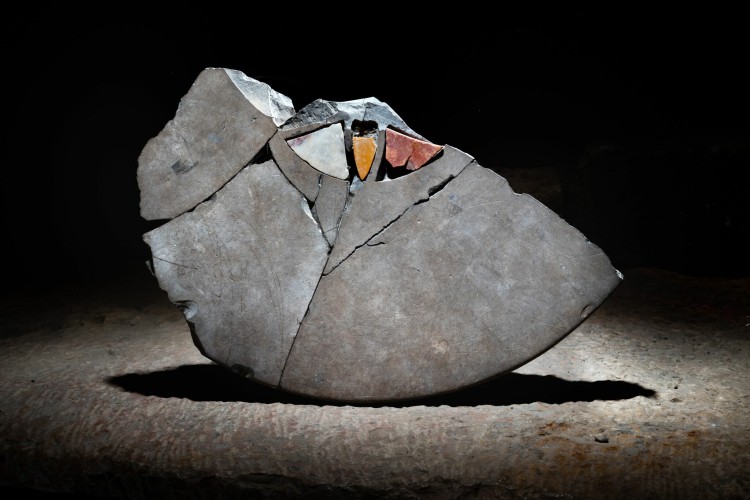 Table fragment inlaid with colorful stones (Photo: Kobi Harati, City of David)
Table fragment inlaid with colorful stones (Photo: Kobi Harati, City of David)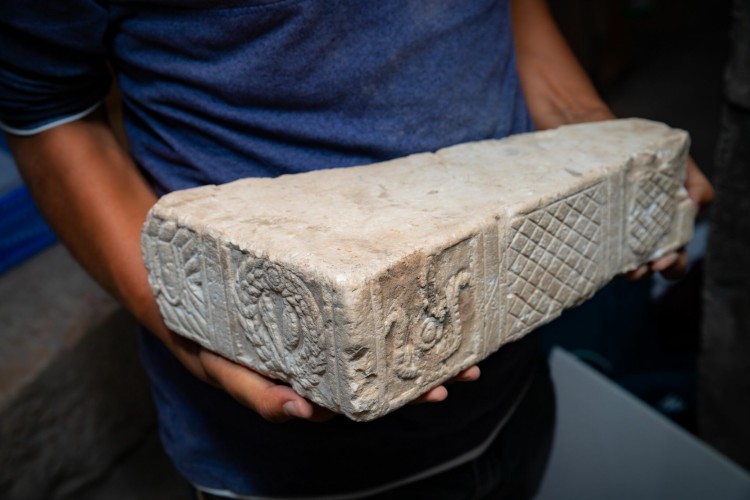 Decorated table fragment (Photo: Kobi Harati, City of David)
Decorated table fragment (Photo: Kobi Harati, City of David)Also showcased were various silver coins, the most notable being a silver shekel minted in Tyre in 33 CE. According to the account in the Mishna, this coin was used for the half-shekel donation to the Temple at the end of the Second Temple period.
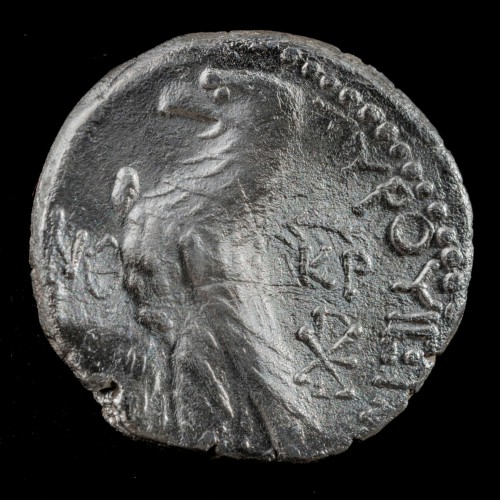 Silver coin, Tyrian shekel found in the street excavation (Photo: Kobi Harati, City of David)
Silver coin, Tyrian shekel found in the street excavation (Photo: Kobi Harati, City of David)Other findings from the excavations include jewelry, such as a ring set with a precious stone found in a ritual bath, as well as pottery and small bottles used for storing perfumes or oils.
The total length of the street, which connected the Pool of Siloam in the south of the City of David to the base of the Temple Mount, is 600 meters and is approximately 8 meters wide. So far, the southern section of the street has been uncovered, with a total length of around 350 meters. The magnificent street was paved with large stone slabs, typical of monumental construction throughout the Roman Empire.
The discovery of the street incorporated advanced, pioneering research methods, which reinforced the understanding that King Herod was not solely responsible for Jerusalem's massive construction projects late in the Second Temple period. Recent research suggests the street was built after Herod's time, under the sponsorship of Jerusalem's Roman procurators, possibly during the tenure of the Roman governor Pontius Pilate.
According to researchers, "From the excavation of the extensive destruction layers covering the street, invaluable information about its history has emerged, including regarding the dietary regime in the besieged city during the revolt. 2000 years after Jerusalem's destruction, we are privileged to return to it and virtually touch the city's last moments before its ruin."
U.S. Ambassador to Israel, David Friedman, stated at the event: "The City of David brings ancient Jerusalem back to life. It enables each of us to walk the paths that Israel's prophets walked, voicing revolutionary ideas of freedom and human rights, concepts that became the intellectual and constitutional foundation of our nation. It is a unique privilege, for us as Americans, to walk alongside our Israeli counterparts on the newly unveiled Pilgrims' Path, where our shared ancestors once trod in prayer and blessing."
CEO of the Elad Foundation and Israel Prize recipient, David (David'leh) Be'eri, declared: "The Pilgrims' Path in Second Temple days connected countless people from all parts of the land and world on their way to the Temple. Soon, it will again connect millions of visitors and tourists who will walk those very same stones. 2000 years ago, the Romans thought they ended Jewish life in Israel and Jerusalem. Today, 2000 years later, we're back in the exact same place, as a free nation in our land and our capital, Jerusalem."

